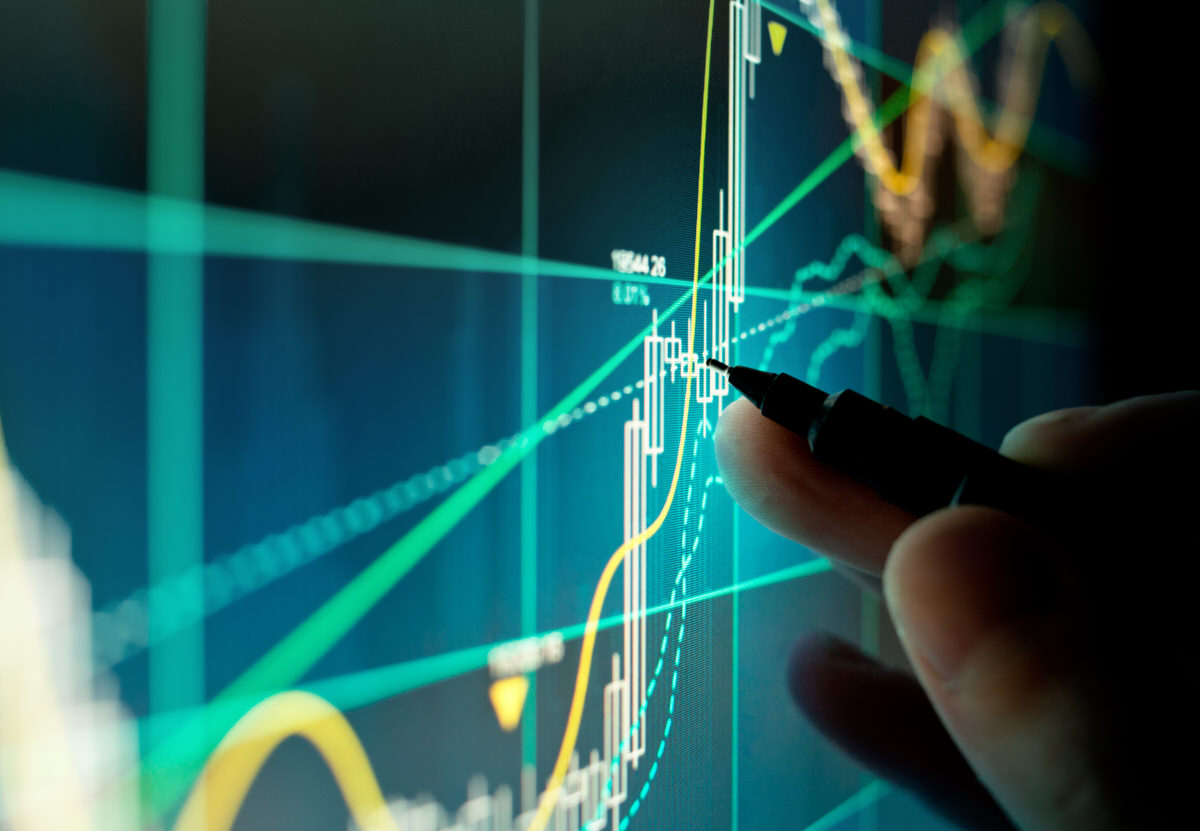by Liz Ann Sonders, Jeffrey Kleintop, and Kathy Jones, Charles Schwab & Company Ltd.
The U.S. economy is accelerating quickly, with gross domestic product growth expected to be as high as 8% this year—the fastest pace since 1983. Globally, we’ve just experienced the sharpest economic “V” in history—a deep recession and rapid recovery within just five quarters. Longer-term bond yields have continued to rise, reflecting the economy’s faster-than-expected recovery from the COVID-19 crisis, as well as growing inflation concerns.
U.S. stocks and economy: Picking up steam
The U.S. economy remains on solid footing as we continue to move into a period of exceptional growth. Economists are estimating gross domestic product (GDP) to grow anywhere from 6% to 8% this year—the fastest pace since 1983.
Brighter prospects have been confirmed by a reacceleration in the labor market. As you can see in the chart below, growth in nonfarm payrolls in March was quite strong—with 916,000 jobs added and an upward revision of nearly 90,000 in February. The downside is that we still have nearly 8.5 million jobs to regain to get back to pre-pandemic levels. Fortunately, though, breadth is strengthening; nearly every sector added jobs in March and those industries tied closely to the economy’s reopening (such as leisure and hospitality) made substantial gains.
You can also see that job openings—as measured by the Job Openings and Labor Turnover Survey (JOLTS) from the Bureau of Labor Statistics—have sharply recovered, surpassing their pre-pandemic levels. Openings in February reached 7.37 million, just 171,000 below the record high in November 2018. Given JOLTS is a leading indicator, the resumption in strength confirms the broader improvement in the labor market’s health.
Job openings have rebounded swiftly as payroll gains have accelerated

Source: Charles Schwab, Bloomberg. Nonfarm payrolls as of 3/31/2021. JOLTS as of 2/28/2021
Expectations of rapid growth this year, along with still-accommodative monetary and fiscal policy, have stirred up inflationary concerns, which have already been confirmed by the sharp increases in prices paid by businesses surveyed by the Institute for Supply Management (ISM). You can see in the next chart that these components are well above 50—the point that signals expansion versus contraction—which underscores the pressure companies are facing with rising costs.
You can also see that the consumer price index (CPI) has surged, but much of that is due to base effects. Given the metric is reported in year-over-year terms, the strong gain reflects the depressed prices/demand we saw at this point last year (the depths of the pandemic). Given that, CPI likely won’t stay elevated at its current level, and while we may see some stronger prices throughout the year, we aren’t expecting a return to 1970s-style inflation.
Price pressures are picking up, with CPI following suit for now

Source: Charles Schwab, Bloomberg, as of 3/31/2021.
With traditional cyclical sectors of the market—such as Energy and Financials—continuing to perform well over the past several months, U.S. stocks have priced in much of the swift economic growth we’re bound to see. Performance has turned a bit more mixed lately, but the broader rotation away from the strong pandemic-favored areas—such as Information Technology—and into cyclicals has continued.
That has coincided with a cooling in some sentiment metrics such as call option volume. You can see in the chart below that the level of call options purchased (measured on a 20-day average basis) has rolled over from its recent extreme peak.
Speculative call option activity is starting to ease

Source: Charles Schwab, Bloomberg as of 4/14/2021.
Fortunately, the reversal hasn’t coincided with any material weakness in the broader market. However, optimism remains elevated in many measures of sentiment—particularly on the attitudinal side. The hope is that even if sentiment remains stretched, expected stronger earnings growth is kicking in, which could ease valuation pressures. For now, however, pervasive enthusiasm is more of a vulnerability for equities.
Global stocks and economy: That was fast
In the first quarter of 2021, the world economy likely rebounded back to its pre-pandemic level. Forecasts for GDP growth across major economies point to global growth of around 1.3% in the first three months of 2021, according to Bloomberg Economics. Incredibly, we’ve experienced the sharpest economic “V” in history—a deep recession and rapid recovery within just five quarters.
And we’re back

*Global Q1 forecast from Bloomberg Economics based on Q1 economists’ consensus forecasts for major economies.
Source: Charles Schwab, World Bank data as of 4/9/2021.
The global vaccine rollout, expanding stimulus, and adaptations to the pandemic along with an anticipation of a demand snapback as restrictions ease, contributed to last week’s upgrade of the global growth forecast to 6.0% for 2021 by the International Monetary Fund. If realized, this would be the fastest pace of growth for the global economy seen in nearly 50 years, as you can see in the chart below.
2021 growth expected to be fastest in nearly 50 years

Includes IMF forecast for 2021.
Source: Charles Schwab, International Monetary Fund and World Bank data as of 4/9/2021.
A year ago, many assumed the weaker governments, health-care systems and fiscal stability of emerging market economies would cause them to suffer the most from the pandemic during the downturn—resulting in a lagging rebound relative to developed countries. Yet, that has not been the case. As the chart below shows, emerging market economies suffered less in 2020 and are expected to experience more rapid GDP growth in 2021. Notably, they engaged in much lower levels of fiscal and monetary stimulus than developed nations, avoiding the sowing of seeds that can lead to potential future financial problems.
Emerging market economies vs. developed markets in 2020 and 2021

Source: Charles Schwab, International Monetary Fund April 2021 World Economic Outlook data and forecasts as of 4/9/2021.
Inflation is set to rise around the world in the months ahead, buoyed by transitory factors tied to supply chain bottlenecks and easy comparisons to a year ago. Looking forward, as the economic reopening broadens, raw materials and component shortages begin to disappear, and supplier delivery times shorten, inflation is anticipated to settle inside most central banks’ comfort zones. This may ease concerns about premature tightening. While the Bank of Canada may start to taper asset purchases this month, becoming the first G7 central bank to start to slow the pace of stimulus, it remains an outlier. Other major central banks have stated that they remain committed to providing ongoing stimulus, supporting a brighter growth outlook for 2021.
Fixed income: The Fed engineers a bond bear market
Bond yields continue to push higher, reflecting the economy’s faster-than-expected recovery from the COVID-19 crisis. With vaccination rates picking up and expansive fiscal policy supporting consumer and business incomes, it’s not surprising that yields are reflecting a more positive economic outlook. However, inflation concerns are also contributing to higher yields.
Whether measured by surveys or derived from market-based indicators, inflation expectations have risen sharply. Looking at the difference in yields between nominal Treasuries and Treasury Inflation Protected Securities (TIPS), it’s clear that investors are demanding more compensation for the risk of higher inflation over the next five to 10 years.
Market inflation expectations have risen

Source: Bloomberg. U.S. Breakeven 10 Year (USGGBE10 Index) and U.S. Breakeven 5 Year (USGGBE05 Index). Daily data as of 1/22/2021.
Yet despite the economy’s rapid rebound and rising inflation concerns, the Fed continues, and intends, to keep short-term rates near zero until the recovery is “complete.” This is an outgrowth of the Fed’s new policy approach which is “outcomes based” rather than “outlook based.” In other words, the Fed will not raise short-term interest rates or tighten monetary policy until it sees evidence that inflation is picking up.
Fed Chair Jerome Powell has suggested that while the Fed is encouraged by the economic recovery, it is still not complete. By the Fed’s definition, a complete recovery will occur when broad measures of employment return to pre-pandemic levels. That includes groups that have historically lagged, such as those with lower education levels.
Employment to population ratio bouncing back but below pre-pandemic levels

Source: Bureau of Labor and Statistics. Civilian Employment-Population Ratio (USERTOT Index), Employment-Population Ratio - 25-54 Yrs. ("Prime Age" USER54A Index), U.S. Recession Index (USRINDEX Index). Percent, Monthly, Seasonally Adjusted. Data as of 3/31/2021.
The Fed’s underlying assumption is that inflation is not a significant risk as long as there is excess capacity in the labor market—since it suggests that wage growth will remain slow. Any interim inflation is expected to be the result of temporary factors such as shortages of certain goods due to bottlenecks created by the pandemic. By many measures, inflation is still relatively low.
Most inflation measures are under the Fed’s 2% average inflation target

Source: Federal Reserve Bank of St. Louis, Bloomberg. Consumer Price Index for All Urban Consumers: All Items (Overall CPI), U.S. Personal Consumption Expenditure Core Price Index (Core PCE), U.S. Personal Consumption Expenditure Deflator (PCE Deflator), Consumer Price Index for All Urban Consumers: All Items Less Food and Energy (Core CPI), 16% Trimmed-Mean Consumer Price Index % change at annual rate (FRBC Trimmed-Mean CPI), Sticky Price Consumer Price Index (FRBA Sticky Price CPI), Median Consumer Price Index % change at annual rate (FRBC Median CPI), Sticky Price Consumer Price Index, Less Food and Energy (FRBA Sticky Price CPI Core). Monthly data as of 2/28/2021.
For markets, the Fed’s very easy policy stance is actually bearish for long-term bonds since it is contributing to higher inflation expectations. When combined with expansive fiscal policy, it means bond yields are likely to continue to rise and the yield curve will continue to steepen. It also suggests that TIPS, corporate, and municipal bonds should outperform Treasuries. Demand in riskier segments of the market, such as high yield and emerging-market bonds, should remain firm as well.
Senior Investment Research Specialist Kevin Gordon contributed to this report.
Copyright © Charles Schwab & Company Ltd.














